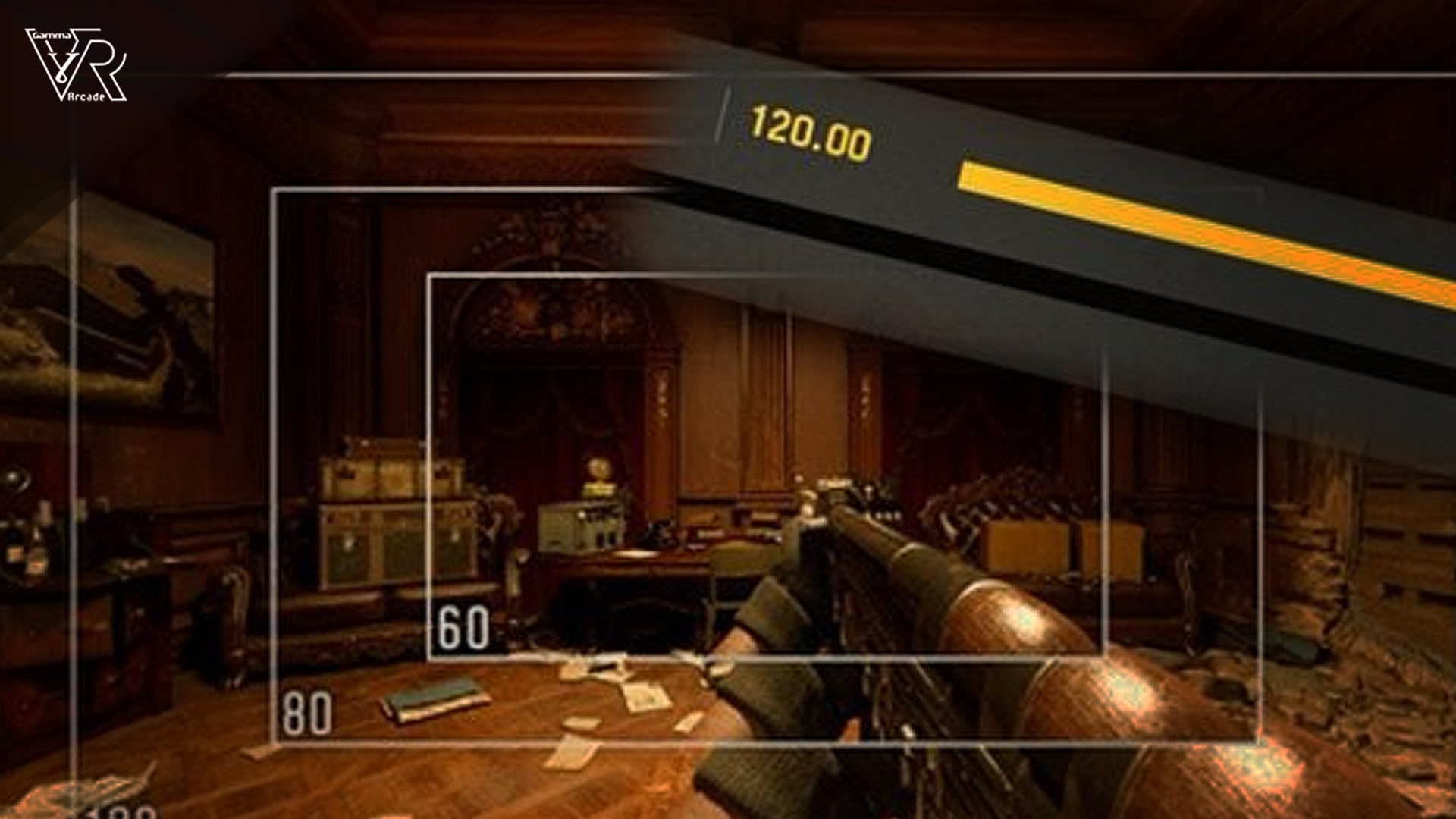A comprehensive Guide to choose Right VR Headset
(Podcast Episode)
A comprehensive Guide to choose Right VR Headset
In the fast-evolving world of virtual reality, choosing the perfect VR headset for your gaming needs can be daunting. Furthermore, with numerous options available on the market, each boasting unique features, making an informed decision is crucial. So here we have a comprehensive guide to choose the right VR headset for you to get an idea.
This comprehensive guide will walk you through the essential factors to consider when selecting a VR headset, ensuring you get the most immersive and comfortable gaming experience possible. Let’s discuss the factors to consider when choosing a VR headset.
Factors to consider when choosing a VR headset

-
Resolution Matters
The first factor to consider when choosing a VR headset is resolution. VR headsets come with varying display resolutions, directly impacting the clarity and sharpness of the virtual world you’ll be exploring.
High-resolution VR headsets like the Oculus Quest 2 and HTC Vive Pro offer a crisp and detailed visual experience. These headsets typically feature OLEDs or LCDs, providing stunning visuals with vibrant colors. If you want to be fully immersed in your virtual gaming world, a high-resolution headset is a must.
On the other hand, budget-friendly options like the Oculus Rift S and PlayStation VR offer lower resolutions but can still deliver an enjoyable gaming experience. Consider your budget and the importance of visual fidelity when making your decision.

-
Field of View (FoV)
The field of view is another critical factor. It determines how much of the virtual world you can see without turning your head. A wider field of view enhances immersion by making the virtual environment feel more realistic.
Headsets like the Valve Index and Pimax 8KX are known for their expansive field of view, providing a more immersive gaming experience. However, a wider FoV often requires more powerful hardware to maintain smooth gameplay.
Remember that a larger FoV can also strain your eyes and neck, so choose a balance that suits your comfort level and gaming preferences.
-
Comfort and Fit
Long gaming sessions demand a comfortable headset. Look for a headset with adjustable straps, cushioned faceplates, and ergonomic designs. Models like the Oculus Quest 2 and the Sony PlayStation VR are designed with user comfort in mind, making them suitable for extended gaming sessions.
Additionally, consider the weight of the headset. Heavier headsets may cause discomfort over time, so opt for a lightweight design if you plan on playing for extended periods.
-
Tracking and Controllers
The quality of tracking and controllers can significantly impact your gaming experience. Some VR headsets come with inside-out tracking, which uses built-in sensors to track your movements without needing external sensors. This is convenient but may offer different precision than external tracking systems.
Controllers should also be comfortable to hold and responsive to your movements. Headsets like the Oculus Rift S and HTC Vive Cosmos include reliable controllers that enhance gameplay.
-
Compatibility and Ecosystem
Consider the VR ecosystem and the availability of games and applications compatible with your chosen headset. Oculus, for instance, has a vast library of VR games and experiences. However, if you prefer specific titles exclusive to other platforms, ensure your chosen headset supports them.
-
Price and Budget
VR headsets vary significantly in price, so it’s crucial to establish your budget beforehand. While high-end models like the Valve Index and HTC Vive Pro offer top-notch performance, more affordable options like the Oculus Quest 2 and PlayStation VR provide excellent value for budget-conscious gamers.
Remember that your VR headset budget should also account for any additional hardware you might need, such as a powerful gaming PC or a PlayStation console.
Comparison of Popular VR Headsets
Let’s compare some of the most popular VR headsets, considering resolution, field of view, comfort, tracking, and price.
Oculus Quest 2:
- Resolution: 3664×1920 pixels (combined)
- Field of View: Approximately 90 degrees
- Comfort: Lightweight with adjustable straps and a comfortable fit
- Tracking: Inside-out tracking with Oculus Insight
- Price: Affordable compared to high-end models
Valve Index
- Resolution: 2880×1600 pixels (combined)
- Field of View: Approximately 130 degrees
- Comfort: Comfortable and ergonomic design
- Tracking: Precise external tracking using base stations
- Price: High-end, premium pricing
HTC Vive Pro
- Resolution: 2880×1600 pixels (combined)
- Field of View: Approximately 110 degrees
- Comfort: Well-padded, adjustable head strap
- Tracking: External tracking with SteamVR Base Stations
- Price: Premium price range
Oculus Rift S
- Resolution: 2560 x 1440 pixels (combined)
- Field of View: Approximately 110 degrees
- Comfort: Comfortable design with a halo head strap
- Tracking: Inside-out tracking with Oculus Insight
- Price: Mid-range, offers a good balance between price and performance
PlayStation VR:
- Resolution: 1920 x 1080 pixels (combined)
- Field of View: Approximately 100 degrees
- Comfort: Well-designed, adjustable headband
- Tracking: Uses PlayStation Camera for tracking
- Price: Affordable for PlayStation users
These are just a few examples, and many other VR headsets are available with varying specifications. When deciding, it’s essential to weigh these factors against your personal preferences and gaming needs. Consider your budget, the games you want, and the desired experience.
In the end, the right VR headset for you will be the one that offers the best balance of resolution, field of view, comfort, tracking, and price, aligning with your gaming preferences and budget.
FAQs for A comprehensive Guide to choose Right VR Headset:
What’s the Difference Between OLED and LCD Displays in VR Headsets?
OLED and LCD are two common types of displays used in VR headsets. OLED collections offer better contrast and vibrant colors, creating a more immersive visual experience. On the other hand, LCDs may provide a slightly higher resolution but often lack the same level of contrast. Choosing between the two depends on your preference for visual quality versus a solution.
Can I Use VR Headsets with my Existing Gaming Setup?
Compatibility varies among VR headsets. Some, like Oculus Quest 2, are standalone and do not require a PC or console. Others, like the Valve Index and HTC Vive Pro, rely on a high-end gaming PC.
PlayStation VR, as the name suggests, works with PlayStation consoles. It’s essential to check the compatibility of your chosen headset with your existing setup or be prepared to invest in additional hardware if needed.
Is Wireless VR Better than Wired VR?
Wireless VR, like the Oculus Quest 2, offers the freedom to move without being tethered to a PC or console. This enhances mobility but may come at the cost of slightly lower graphics quality due to wireless data transmission.
Wired VR, such as the Valve Index, generally provides a more stable and graphically impressive experience but limits your movement. The choice between wireless and wired VR depends on your priorities: mobility or graphics fidelity.
Final Words
Choosing the right VR headset for gaming involves considering several essential factors, including resolution, field of view, comfort, tracking, compatibility, and budget. It’s critical to strike a balance that aligns with your gaming preferences and financial constraints.
By carefully assessing these factors for “A Comprehensive Guide to choose Right VR Headset”, you can make an informed decision that ensures your VR gaming experience is both immersive and enjoyable. So, explore the options, read reviews, and try out different headsets before making your final choice.
With the right VR headset, you’ll be ready to embark on exciting virtual adventures and elevate your gaming to a whole new level.
